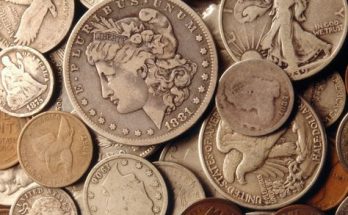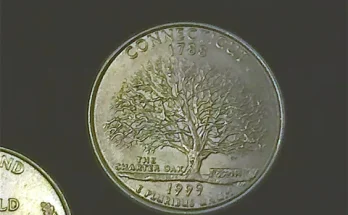After discussing the motivations and strategies of bidders at coin auctions last week, and the meaning of auction prices in general, I am directing attention to current coin markets overall. I have posed questions to and debated many dealers, some of whom do not wish to be quoted, regarding price changes and demand for rare coins in 2011. I have analyzed their responses, and coupled them to my own observations. For the most part, though, the thrust here is on the reporting of information that was provided to me.
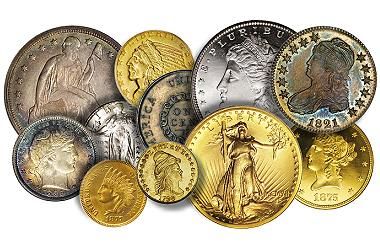 I am now avoiding copper coins, as the markets for these are just too complicated for a brief discussion. As for nickels, John Albanese and John Brush both report that markets for nickels are about “the same” in 2011 as these were in 2010. I am referring to Three Cent Nickels, Shield Nickels, high grade Liberty Nickels and better-date Buffalo Nickels. Albanese emphasizes that prices for these have been “stable” for a long time. Similarly, Brush reveals that he has been “paying the same prices for the last three years for [19th century] Proof Nickels.”
I am now avoiding copper coins, as the markets for these are just too complicated for a brief discussion. As for nickels, John Albanese and John Brush both report that markets for nickels are about “the same” in 2011 as these were in 2010. I am referring to Three Cent Nickels, Shield Nickels, high grade Liberty Nickels and better-date Buffalo Nickels. Albanese emphasizes that prices for these have been “stable” for a long time. Similarly, Brush reveals that he has been “paying the same prices for the last three years for [19th century] Proof Nickels.”
So, the primary topic is changes in demand, so far in 2011, for scarce, pre-1934 silver and gold U.S. coins. As there has been minimal trading in pre-1840 gold and pre-1808 silver coins in 2011, I am ignoring these here.
Though the focus here is on scarce rare coins, the recent sharp increases in silver and gold bullion have affected markets for rare coins, though not to a substantial extent. Some collectors have sold their scarce or rare coins to buy bullion (precious metals); others have sold bullion and then purchased rare coins. Furthermore, some bullion investors have become coin collectors. There is not a clear correlation between bullion prices and rare coin prices.
Certainly, it is a good time for a beginner to start collecting scarce silver coins as many scarce silver coins can now be obtained for bullion or slightly above bullion (silver content) value. On this point, please see John Albanese’s comments in my Oct 13th column on Advice for Beginning and Intermediate collectors. Generally, though, coin collectors should not allow bullion prices to influence their collecting decisions other than to distinguish speculative issues from scarce and rare coins that command respect among knowledgeable coin experts.
I. 20th Century Silver
As I just suggested, many Mercury Dimes, Standing Liberty Quarters, and Walking Liberty Half Dollars that previously were worth substantially more than their respective silver content can now be obtained for little or almost nothing over silver content (bullion value.) Silver bullion markets have not, however, had a significant effect on condition rarities in these series.
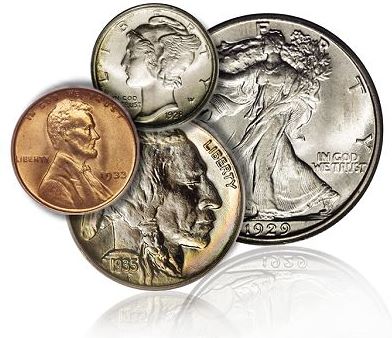 John Albanese points out that “coin shops are now crowded with people who are buying or selling silver coins, and millions of silver buyers have been energized.” He remembers that, “in 1979 and 1980,” the active buying and selling of silver coins and bullion propelled coin markets. “Many silver investors decided to collect rare coins,” John recollects, and many dealers used their profits from bullion to buy rare coins for their inventories or for their own private collections.
John Albanese points out that “coin shops are now crowded with people who are buying or selling silver coins, and millions of silver buyers have been energized.” He remembers that, “in 1979 and 1980,” the active buying and selling of silver coins and bullion propelled coin markets. “Many silver investors decided to collect rare coins,” John recollects, and many dealers used their profits from bullion to buy rare coins for their inventories or for their own private collections.
Rich Uhrich reports that, in 2011, “due to the price of silver, people have been selling bulk silver AND scarce silver coins, often whole collections. There are a lot fewer dates [in silver coin series] that are worth a premium,” over silver bullion value, Uhrich explains. “Now, only two silver Washington Quarters are worth a premium in grades up to MS-60, except maybe a really nice AU-58 1936-D. The two are the ’32-D and the ’32-S.”
Rich also says that increases in the bullion price of silver are encouraging some to collect silver coins. Even so, Rich Uhrich, Kris Oyster and John Albanese all indicate that a growing number of (formerly) better-date, circulated silver coins are being melted.
Higher grade, PCGS or NGC certified Mercury Dimes, Standing Liberty Quarters, and Walking Liberty Halves are a different matter and are ‘holding steady.’ Collector demand for these has not changed much.
John Brush, vice president and senior numismatist of DLRC, states that, although better-date Walking Liberty Half Dollars “have lower auction records” in 2011, demand by collectors is “the same as it was in 2010.” The auction records are thus misleading, according to Brush, as such Walkers are selling to collectors for the same prices as they did when auction prices were higher.
Brush also finds that “MS-63 and higher Mercury Dimes” are trading at lower levels than these were in 2010. Indeed, Brush states that “prices for many Mercury Dimes are down 5% to 10%” and that “this is now a great buying opportunity for collectors of Mercury Dimes.” I (this writer) suggest collecting 19th century silver coins.
II. Capped Bust Silver Coins
I hear scant reports regarding MS-63 and higher grade, Capped Bust silver coins in 2011, though there is significant activity in this area of coin markets. John Albanese, John Brush and Kris Oyster all report that they have handled too few of these so far in 2011 to really draw a conclusion regarding changes in demand. Further, Albanese, Brush and Oyster all indicate that there have not been many choice or gem uncirculated (MS-63 and higher), mid range to ‘high end’ PCGS or NGC certified bust silver coins ‘on the market’ so far in 2011. Jim McGuigan agrees.
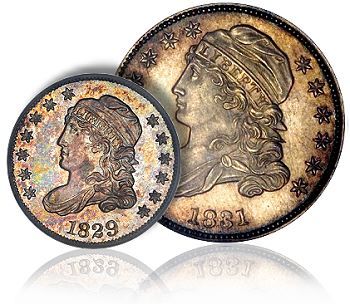 For decades, McGuigan has been a specialist in pre-1840 U.S. coins. He reports that “the market for bust silver coins that are nice for their [certified] grades is probably about the same as it was last year. Not much has happened [regarding] really cool bust material this year,” Jim relates.
For decades, McGuigan has been a specialist in pre-1840 U.S. coins. He reports that “the market for bust silver coins that are nice for their [certified] grades is probably about the same as it was last year. Not much has happened [regarding] really cool bust material this year,” Jim relates.
Capped Bust silver coins were minted during the following years, half dimes from 1829 to 1837, dimes from 1809 to 1837, quarters from 1815 to 1838, and halves from 1807 to 1836. Earlier, Draped Bust silver coins are generally much rarer.
Markets for MS-60 to MS-63 Capped Bust silver coins seem to be a little slower in 2011 than these were a year ago. As for circulated bust silver coins, Rich Uhrich finds that markets for these are “about the same” or “slower” than these were in 2010, “except “Capped Bust Dimes, which are really moving now. In 2010, Bust Dimes were dead,” Uhrich says. “They came back to life.”
Uhrich provides a mixed review of markets for circulated Capped Bust Quarters. Most dates in the Capped Bust Quarter series “are definitely down in 2011 in grades up to AU-55, except for 1815s and 1822s. We can’t keep those in stock,” Rich reports.
Michael O’Higgins, in contrast, finds that there is much more demand this year for circulated bust silver coins “because a lot of marketers, big direct marketing companies, are selling them, especially bust quarters, bust half dimes and bust dimes, mostly Fine to Very Fine [grades]. They want hundreds of those, and some bust halves. This is all new in 2011,” O’Higgins explains. Mike is the owner of SSEC in Fort Lauderdale, and has been active in the coin business for more than thirty years.
O’Higgins contends that “Capped Bust Quarters are extremely underpriced; they are more than twenty times rarer than Capped Bust Halves, but the prices are not much different.” Rich Uhrich has a large collector clientele for Capped Bust silver and he finds that, in 2011, “quarters and half dimes are pretty slow, not moving.”
Rich holds that the demand for Capped Bust Halves is “about the same” as it was last year. John Brush notes, though, that “for Capped Bust Half Dollars, nice quality coins are more difficult to find than they were in 2010.”
I (this writer) conclude that there is much trading activity in Capped Bust silver coins, including numerous mediocre coins, in grades from Good-04 through MS-63. In MS-64 and higher grades, very few fresh Capped Bust silver coins are trading.
III. Liberty Seated Silver Coins
Generally, Liberty Seated silver coins were minted from the late 1830s or so to 1891, though Liberty Seated Half Dimes and Liberty Seated Dollars were discontinued in 1873. So far in 2011, most Liberty Seated coins have not been increasing in value.
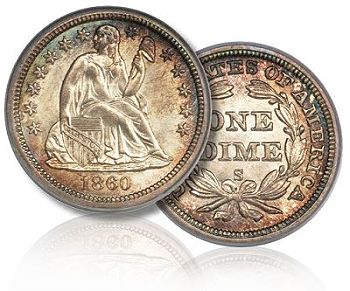 Regarding Liberty Seated Half Dimes, Uhrich finds that there are “just as many collectors in 2011 as there were in 2010. We specialize in key dates of Liberty Seated Half Dimes,” Rich touts, especially “1846, 1853-O No Arrows and ’63 to ’67 Phillies, and the “market is good for these.” Many people are assembling sets of Liberty Seated Half Dimes.
Regarding Liberty Seated Half Dimes, Uhrich finds that there are “just as many collectors in 2011 as there were in 2010. We specialize in key dates of Liberty Seated Half Dimes,” Rich touts, especially “1846, 1853-O No Arrows and ’63 to ’67 Phillies, and the “market is good for these.” Many people are assembling sets of Liberty Seated Half Dimes.
Uhrich states that “Liberty Seated Dimes are little slower in 2011. Quarters are doing okay,” though these are not really rising.
Rich boldly asserts that “Liberty Seated Halves and Seated Dollars, more the PCGS certified coins, are just flying off the shelf in 2011. They were not a year ago. They were doing okay a year ago, much better now. We have to be very focused on buying more Seated Halves,” Rich reveals. Indeed, the “number of collectors of [Liberty] Seated Halves is going up; the number [collecting Liberty Seated] dollars is going up, too, but not much as for Liberty Seated Half Dollars,” Uhrich concludes.
While Rich is often focused on better-date Liberty Seated coins, Michael O’Higgins tends to handle Liberty Seated type coins, which are relatively less rare dates. Type coins are so named because these are suitable for representing their respective types in type sets and do not cost as much as better dates.
“Common date [Type] seated coins in 60 to 64 are very slow in 2011,” O’Higgins says, particularly those that “are unattractive or low end for the grade. For 65 [grade] seated coins, it depends what the coin looks like,” Mike points out. For most of them, markets for these are “about the same” as they were in 2010.
O’Higgins notes, in contrast, that “seated type coins in 67 and 68 [grades] have gone up in 2011, especially finest known or low pop coins. A low pop coin that had not been on the market for years, something that is needed for registry sets, [may] possibly bring a really high number.” Most Liberty Seated coins, however, O’Higgins figures, are not faring all that well, except for the ones that are exceptional for their respective grades.
John Brush’s interpretation of the market for Liberty Seated coins is similar to that of O’Higgins. Brush emphasizes the phenomenon that I (this writer) term the ‘Widening Gap’ between the prices for mid range to high end coins and the prices for ‘low end’ coins of the same type, certified grade, and date (or of a commensurable date). Please see my August 2009 article on the ‘Widening Gap’ for an explanation of this phenomenon.
Brush figures that ‘low end’ Liberty Seated coins “have gone down” in 2011 and “high end Liberty Seated coins have gone up in 2011.” Here, the terms ‘high end‘ and ‘low end’ refer to already certified grades. Consider that often there are ‘low end’ 65 grade coins and there are ‘high end’ 65 grade coins of the same date and type that have been certified by the same grading service.
Overall, John Albanese states that he has “no problem selling” mid range to high end, gem quality, 19th century silver coins. “There are too few [of these] on the market in 2011 to draw a firm conclusion about price trends,” Albanese finds.
“In general, no problem selling Barber coins in any grades at current prices, really easy to sell, prices are staying the same,” Mike O’Higgins reports. Again, like with Liberty Seated coins, high end coins are “blowing out unattractive coins, but this was true last year also,” O’Higgins asserts.
Generally, it seems that “as many or more people are collecting” Barber coins in 2011. “This is true of all grades,” Mike says.
IV. Morgan Silver Dollars
Speculators have been competing with each other for common date Morgans, in all grades, and prices for these have markedly risen in 2011. Collector demand for better-date Morgans seems the same, on average, as it was in 2010. Demand for some better dates is higher.
 Mike O’Higgins relates that “better date Morgans are stable; [there is] a lot of demand for medium better dates, like ’93-CC in MS-63, ’94-S in 64, ’96-S in 64, and 1895-S in 63.” John Brush states that in 2011 “it has been increasingly difficult to find the key dates [in high grades], 1889-CC, 1892-S, 1893-S, [particularly] nice PCGS coins.” In regards to these, Kris Oyster declares, “key date dollars in uncirculated [MS-60 and higher] are bringing incredible money.”
Mike O’Higgins relates that “better date Morgans are stable; [there is] a lot of demand for medium better dates, like ’93-CC in MS-63, ’94-S in 64, ’96-S in 64, and 1895-S in 63.” John Brush states that in 2011 “it has been increasingly difficult to find the key dates [in high grades], 1889-CC, 1892-S, 1893-S, [particularly] nice PCGS coins.” In regards to these, Kris Oyster declares, “key date dollars in uncirculated [MS-60 and higher] are bringing incredible money.”
Regarding ‘better date but not key date’ Morgans, Brush finds that these “are the same as in 2010, continuing to bring decent numbers,” in grades from VG-08 to MS-66. “Common date Carson City [Mint] Morgans in 62 and higher [grades] are less in demand in 2011,” Brush adds.
In O’Higgins’ experience, there has been an increase in demand for many better-date Morgans in 2011, “without question, not all these price increases have been reflected in price guides. The [guides] do not always reflect the true market. There are a lot of factors that go into the market, retail to collectors, retail to the public, wholesale to dealers, wholesale to marketing companies, lots of transactions that the price guide [editors] do not know about.” On the topic of identifying market prices, note that my column last week is on the interpretation of auction prices and similar analytical concepts may be employed to analyze other coin prices.
V. Gold
John Albanese finds that demand for 19th century better-date gold coins is about the same as in late 2010. John Brush says, likewise, that “prices for Liberty Head gold coins are about the same,” except that “very rare Liberty gold coins have gone up in value in 2011.”
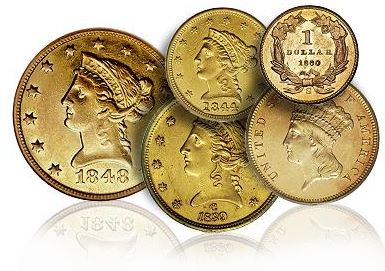 In contrast, “all scarcer gold coins have done well in 2011, prices going upward, Mike O’Higgins asserts. “Territorials are selling really well. All shipwreck S.S. Central America coins have definitely increased in 2011, no doubt about it, maybe 15% to 20%,” O’Higgins adds.
In contrast, “all scarcer gold coins have done well in 2011, prices going upward, Mike O’Higgins asserts. “Territorials are selling really well. All shipwreck S.S. Central America coins have definitely increased in 2011, no doubt about it, maybe 15% to 20%,” O’Higgins adds.
Kris Oyster “deals a lot in Carson City gold, these coins are moving fast. There is a brisk market. Type One twenties [Double Eagles in] VF to MS-64 are very popular and in demand. Type Two twenties are popular in BU [MS] grades,” Oyster adds, “for years, they have been moving faster at current levels. Demand has been increasing in 2011 for scarce Liberty tens [Eagles], too,” Kris reveals. Generally, “prices are going up for better date silver dollars, better date gold, some high grade gold, and Civil War dated gold is really popular this year,” Oyster concludes.
In response to my questions about price changes in 2011, none of the dealers mentioned Proof gold except O’Higgins, who stated that “Proof [Liberty Head] Quarter Eagles are going up in price in 2011. Some collectors are fighting each other for them, in 66 or higher grades, especially cameo, or ultra cameo,” O’Higgins notes.
In regards to better-date 20th century gold coins, John Brush remarks that “Saints are selling for less than in 2010. All Indian Head series are stronger in 2011 than in 2010, in 63 and higher” grades, according to Brush.
Along similar lines, John Albanese reports that “better date $5 Indians in 62 to 66 are very easy to sell. Indian $10 gold coins [Eagles] are the hottest series in 2011.” Albanese maintains, though, that markets for rare coins overall are lackluster. “On a scale of one to ten, with ten being the best, I [john] would give the current market a four.”
VI. CAC
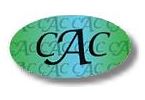 I (this writer) am nearly certain that prices for CAC approved coins, on average, are a little higher in 2011 than in the early part of 2010. While John Brush has publicly declared that this is so, my point here regarding CAC approved coins is based upon information from several sources. Some wish to remain anonymous or have not yet granted permission to be quoted on this specific point. Please, though, read my columns regarding the B&M pre-FUN auction, the Jan. 2011 FUN Convention itself, business strikes that sold on Platinum Night and the Henry Miller collection. (As always, clickable links are in blue.) Relevant remarks regarding market prices for CAC certified coins are easily found in these columns.
I (this writer) am nearly certain that prices for CAC approved coins, on average, are a little higher in 2011 than in the early part of 2010. While John Brush has publicly declared that this is so, my point here regarding CAC approved coins is based upon information from several sources. Some wish to remain anonymous or have not yet granted permission to be quoted on this specific point. Please, though, read my columns regarding the B&M pre-FUN auction, the Jan. 2011 FUN Convention itself, business strikes that sold on Platinum Night and the Henry Miller collection. (As always, clickable links are in blue.) Relevant remarks regarding market prices for CAC certified coins are easily found in these columns.
“Premiums for CAC coins continue as the service grows,” states Brush. “The same CAC coins are worth more in 2011 than they were in 2010. Absolutely so, there is increased demand for CAC coins [in 2011], prices are at least 10% higher,” Brush declares.
As Mike O’Higgins notes, many market prices are not reflected in price guides, partly because there are so many variables, including different kinds of transactions, that influence market prices. O’Higgins and Brush both emphasize the difference in price between ‘high end’ and ‘low end’ coins of the same date and certified grade. It is certainly true, in my (this writer’s) view, that there are no guides that accurately reflect price differences between ‘high end’ and ‘low end’ coins. Also, there is not an accurate price guide for CAC approved coins. Even when there are bids for CAC approved coins on CCE or CoinPlex, such coins are usually not available at the bid levels.


